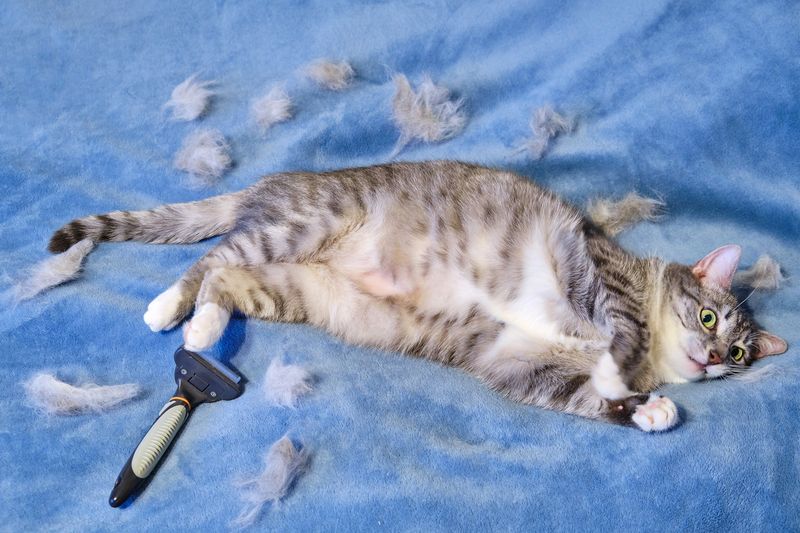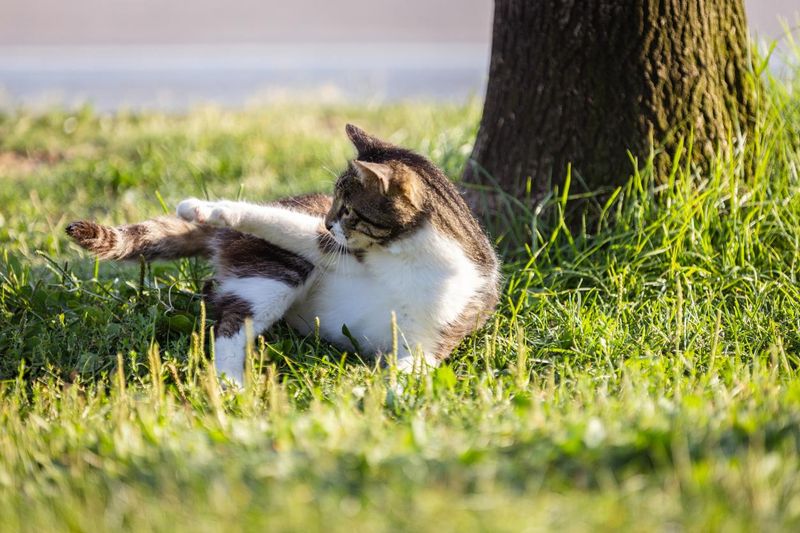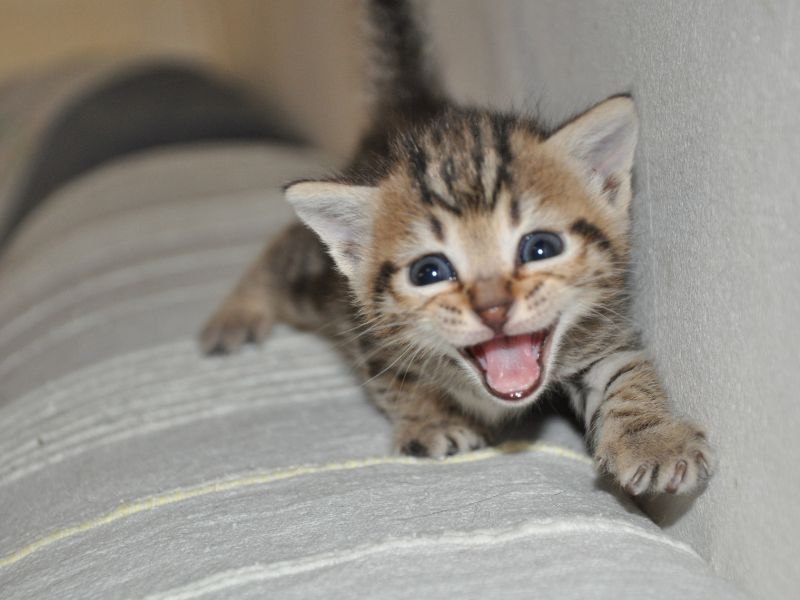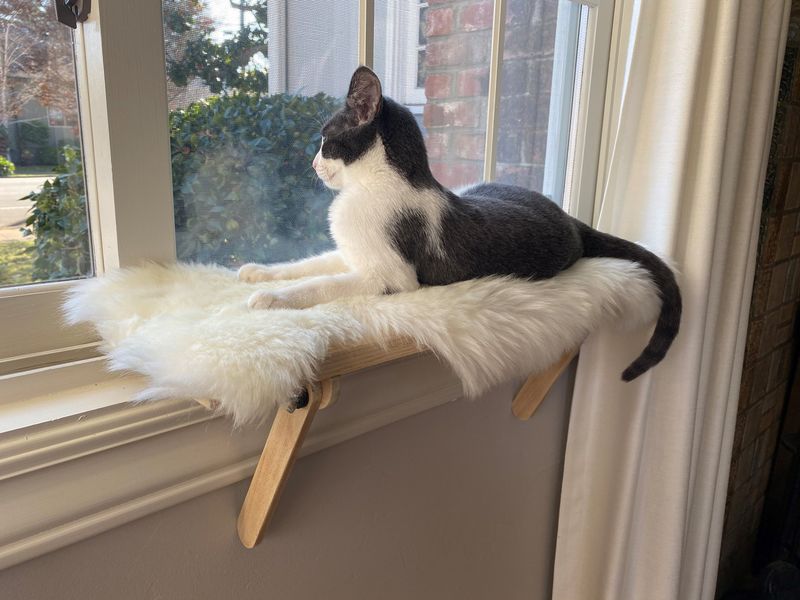📖 Table of Content:
- 1. Over-Grooming or Hair Loss
- 2. Chasing Their Tail or Shadow
- 3. Sleeping More Than Usual
- 4. Aggressive Behavior
- 5. Destructive Behavior
- 6. Excessive Vocalization
- 1. Interactive Puzzle Toys
- 2. Clicker Training
- 3. Window Perches with a View
- 4. Rotate Toys Weekly
- 5. Create Vertical Space
- 6. Daily Play Sessions
Cats are often thought of as independent, low-maintenance companions. But just like humans, our feline friends need mental stimulation and emotional engagement to stay healthy and happy. Boredom in cats is frequently misunderstood or overlooked, which can lead to subtle behavioral changes that escalate if left unaddressed.
Contrary to popular belief, a bored cat isn’t simply a lazy one. Cats are natural hunters, explorers, and problem-solvers—even indoor ones. Without proper outlets for their instincts and energy, they may develop destructive habits, anxiety-driven behaviors, or signs of depression that puzzle even experienced pet owners.
Recognizing the signs of feline boredom is the first step toward improving their well-being. Once these clues are identified, you can make small but meaningful changes that enrich your cat’s environment and daily life. Mental stimulation, physical activity, and bonding play a critical role in reducing restlessness and fostering a healthier pet. Below are six surprising signs your cat might be bored, followed by six creative, brain-stimulating ways to help them feel fulfilled. These insights can help you create a more engaging world for your cat without drastic changes to your routine.
1. Over-Grooming or Hair Loss
Compulsive grooming is often mistaken for cleanliness, but it can actually be a response to psychological distress. A bored cat might lick, bite, or scratch a specific area obsessively, leading to bald spots or inflamed skin. This behavior is comparable to nervous habits in humans, such as nail-biting or hair-twirling. It’s not just about hygiene—it’s a coping mechanism for a lack of stimulation. Without enough activities or mental engagement, cats may turn to grooming as a way to pass time or relieve anxiety. If your cat is grooming excessively without a medical cause, boredom could be the underlying issue. Consulting with a vet can rule out physical problems, but lifestyle enrichment is often the missing piece.
2. Chasing Their Tail or Shadow
Sudden bursts of play, like chasing their tail or shadows, can look cute but might signal deeper issues. While kittens naturally engage in this type of behavior, adult cats repeating it often may be showing signs of frustration or under-stimulation. These movements aren’t always playful—they may reflect boredom morphing into obsessive patterns. Your cat may be trying to create excitement where there is none, using repetitive actions to spark interest. Although not harmful in the short term, this can become compulsive if not redirected. Rather than scolding or ignoring it, observe how often it occurs and whether other signs of boredom are present. Offering more varied play opportunities can reduce this behavior significantly.
3. Sleeping More Than Usual
Although cats are famously fond of sleep, there’s a limit to how much downtime is considered healthy. When a cat begins snoozing during hours they were once active, it may be due to a lack of stimulation rather than fatigue. With little to engage with, sleep becomes a way to pass the time. Instead of napping to restore energy, they might be doing it out of sheer boredom. Over time, this pattern can affect their mood and physical health. Observing when and how long your cat sleeps can provide insight into their emotional well-being. A mentally stimulated cat generally alternates between energetic play and restful sleep in a balanced rhythm.
4. Aggressive Behavior
Aggression can be rooted in a surprising cause: boredom. A cat lacking mental and physical outlets might lash out unexpectedly, targeting humans, other pets, or even furniture. This behavior can include biting, scratching, or ambushing feet and hands. Far from being mean-spirited, these actions usually reflect pent-up energy looking for release. A cat that seems suddenly irritable or violent may simply be under-engaged. The absence of regular, stimulating interaction allows frustration to build until it erupts. Redirecting this energy through structured play sessions often reduces or eliminates such aggressive episodes.
5. Destructive Behavior
Clawed furniture, chewed cords, and overturned trash bins may not just be mischief—they can be boredom in disguise. Cats with insufficient entertainment often create their own, even if it means causing chaos. These destructive habits aren’t about defiance; they’re about satisfying natural urges for activity and exploration. When left alone for long hours without interaction, cats may entertain themselves in undesirable ways. Instead of punishing your pet, assess whether their environment supports their mental and physical needs. Destruction can usually be curbed with enrichment and scheduled play. What looks like bad behavior may just be a plea for attention.
6. Excessive Vocalization
Unusual or frequent meowing is a form of feline communication that can hint at emotional unrest. While some breeds are naturally more vocal, an uptick in meows, howls, or cries could signal that your cat is mentally under-stimulated. They might be calling out for company, excitement, or simply a change of pace. Owners often misinterpret this as hunger or defiance, but in reality, your cat might just be bored. Pay attention to when and why the vocalizing occurs—patterns can offer important clues. If it’s happening during quiet times when your cat is alone or after playtime has lapsed, boredom is a likely cause. Consistent engagement often helps quiet things down naturally.
1. Interactive Puzzle Toys
Introducing puzzle toys is one of the easiest and most effective ways to mentally engage your cat. These toys typically challenge your pet to work for treats, mimicking the hunt-and-reward pattern they crave. Cats enjoy the stimulation of figuring things out, especially when food is the prize. Varying the complexity of puzzles helps maintain their interest over time. There are toys that roll, flip, or dispense food only after solving a task, keeping your cat intrigued for longer periods. Not only do they fight boredom, but they also slow down fast eaters and improve focus. Keeping a few options in rotation adds novelty and maintains excitement.
2. Clicker Training
Training a cat might sound ambitious, but with patience and a clicker, it’s entirely possible. The technique reinforces positive behavior using a sound signal and a reward, helping your cat associate effort with achievement. Beyond teaching tricks, this method taps into their problem-solving abilities and boosts their confidence. Sessions can be short—just 5 to 10 minutes a day—and still deliver real results. Cats enjoy the mental stimulation of learning and being rewarded for it, even if it’s just a sit or a high-five. Over time, training strengthens your bond and gives your cat a sense of purpose. It transforms idle time into structured, rewarding engagement.
3. Window Perches with a View
A comfortable perch by the window can transform an ordinary day into a captivating one for your cat. The activity outside—a bird flitting by, leaves rustling in the wind, people walking dogs—provides ever-changing visual stimulation. Placing a bird feeder or squirrel feeder nearby adds even more action to watch. These views allow indoor cats to safely indulge their instincts to observe and track movement. For many, it’s as enriching as television is to us. A window seat can be a source of peace and entertainment all in one. Adding a cozy blanket or cushion makes it even more appealing.
4. Rotate Toys Weekly
Leaving all your cat’s toys out at once can actually decrease their interest in them over time. Instead, create a small toy library and swap items in and out every few days. This strategy makes old toys feel new again and keeps your cat from becoming bored. Just like humans, cats appreciate novelty and surprise. Whether it’s a feather wand, a crinkle ball, or a stuffed mouse, toys regain value when reintroduced after a break. Observing which toys get the most attention also helps tailor your future purchases. A fresh rotation boosts curiosity and reignites play drive.
5. Create Vertical Space
Expanding your cat’s world upward is an excellent way to enrich their environment without needing more square footage. Cats are natural climbers and surveyors; they feel safe and stimulated when they can oversee their territory from above. Installing wall-mounted shelves, a tall cat tree, or modular climbing paths can spark exploration. Vertical structures encourage exercise and help reduce tension in multi-cat households by offering more space. These areas often become your cat’s favorite resting or playing spots. Adding varied textures or hiding treats on different levels further enhances the experience. The more dynamic the layout, the more your cat will explore.
6. Daily Play Sessions
Consistent interactive play provides both physical exercise and mental stimulation. Using wand toys, laser pointers, or even DIY setups can mimic hunting behavior that satisfies your cat’s instincts. Regular play also helps strengthen your bond and reduce behavioral issues tied to boredom. Switching up play styles keeps your cat guessing and encourages active engagement. These sessions don’t need to be long—10 to 15 minutes of focused play makes a big difference. Try to schedule them at the same time each day to build anticipation. When play becomes a routine, your cat has something exciting to look forward to daily.












